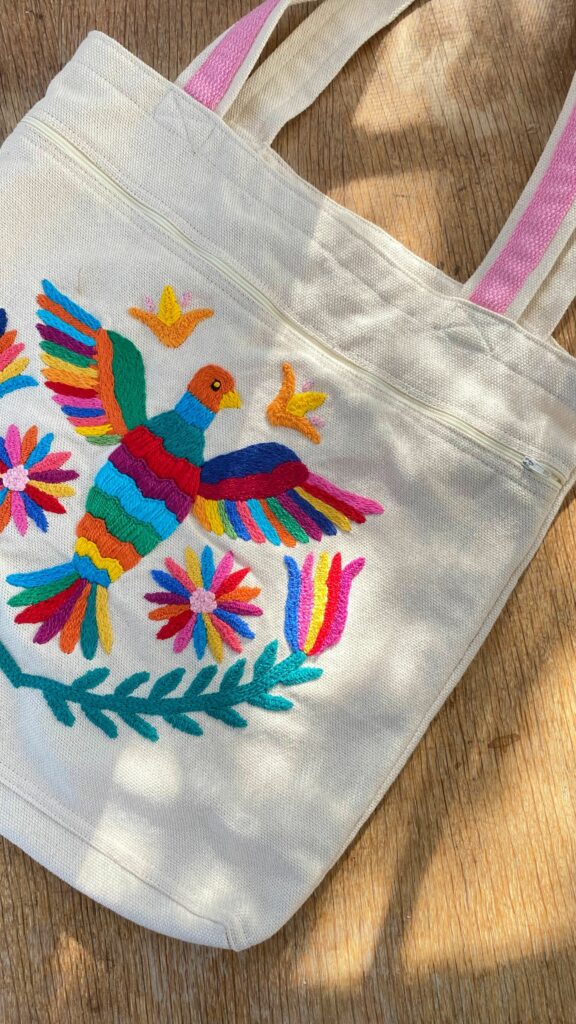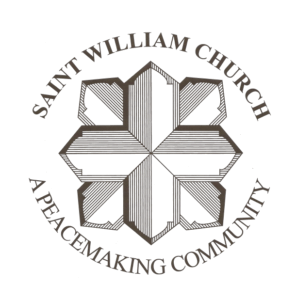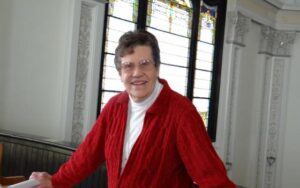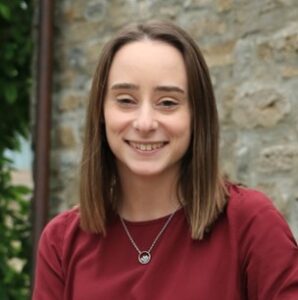Hagar’s tears are seen by God

Photo by Javier Martínez on Unsplash
When I was first asked to preach on the topic of ending violence against women for our St. Phoebe Prayer Service on Nov. 3, I immediately said no. I did not feel equipped nor ready to take on this task. To be honest, I felt small, that I didn’t have anything of value to contribute. As Ellie kept inviting me to preach, she mentioned the reading about Hagar. With tears in my eyes, I said yes. Why? Because Hagar’s story in Genesis has been walking with me for the past few years. I don’t know about you, but I did not grow up hearing Hagar’s name or her story. What I grew up hearing was how Abraham and Sarah were elderly, they had trouble conceiving, and later on he had many children. There is even a song we used to sing in CCD class: “Padre Abraham tenia hijos, muchos hijos tenía el padre Abraham, yo soy uno de ellos y tú también y ahora vamos a alabar al Señor.”
Hagar’s story was first introduced to me as an undergrad at St. Mary’s University in San Antonio. When I learned her full story, I was astonished, frustrated and very much concerned. Why don’t we hear about Hagar and her story? Where was God in all of this? It feels like it is hard to even say her name and what was done to her, her body, and her dignity in the name of bearing a son for Abraham.
I took all of that frustration into the classroom, and thankfully, I had a wonderful professor–Dr. Sarah Ronis–who said: “This is why we are now learning about her and other women and their stories, so that we can share them”.
So, I made it my personal mission to have Hagar’s story known. Who is Hagar? Hagar is a woman, a migrant, a slave, a mother, and also someone who had an extraordinary experience of God. In her agony, God heard her cry and looked at her with mercy and abundant love.
Her story is a story of survival. It is not only a story from the past. I am from Mexico, a beautiful country with exquisite gastronomy, where colors are vibrant and people are warm and joyful. We have incredible artists, from the past and present, and it is where the color TV was created–just to name a few. It is also the country in the Americas with the second most feminicidios (femicides), with 700 women killed just this year from January to September, something I’m not proud of my country!
Hagar’s story continues to live in the tears of the women crossing the border and being forced to separate from their families, in the silent cry of the women who are sexually abused on college campuses, and in the bodies of African American women killed by white supremacists.
And in all of this, I think: where is God? Where is the God that sees me, that sees us?
Like Hagar, God has met me in the well. How beautiful it is that a well is a place that contains water, and water is life, and it brings us refreshment. When I feel dry and exhausted, I think of those moments being by the well and of those people that are like water to me. Where is your well? Where do you draw your water from?
I keep pondering these questions, and I want to invite you to do the same.
Bordar y tejer es medicina*
When I was in Ciudad Juarez for a graduate class on migration and education, I met a diaconal woman, with a deep and genuine love for her neighbors. With her hands, she helped wipe many tears, and her arms were home for many. She is my constant reminder of a well of living water.
She is a bridge between Ciudad Juarez and El Paso, advocating for women abandoned at the border. She holds no ecclesial position, nor does she get paid for her labor. This diaconal woman told me the story of a Salvadoran woman that very much resembles the story of Hagar.
The women from El Salvador had fled her home country to escape domestic and gang violence and the lack of job opportunities. The only thing she carried with her as she crossed the border to Mexico was her faith and the hope of a better life for her and her family. With a little money in her pocket, she was desperate to cross the border to the USA to be reunited with her family. However, a man took advantage of her desperation and she was abducted by a “coyote” to be trafficked for sex. She was sexually abused many times and she was nearly killled. They threw her almost-dying and naked body, like a useless tissue, in front of the cathedral in Ciudad Juarez. She was found by members of the diaconal women’s co-op that dedicates itself to embroidering blouses and totes to collect money and help each other. They took her to the hospital where she received proper care, and they continued journeying with her.

With her fragile and tired hands the Salvadoran woman started embroidering with other women, helping each other en esta lucha–in this struggle–and this was a way for them to heal, tell their stories and accompany each other. Thankfully she was granted asylum status and was able to migrate safely to the USA. This was not an easy process, it took years.
I asked this diaconal woman, where does she get her strength from? And how does she continue doing this without payment or recognition?
“My strength comes from God that sees me, God knows” she said. “My duty is to bring Jesus, not just to stay in the pews, or in the reciting of prayers, but to bring him to the streets and where he is more needed”.
I wonder what our role is to end domestic violence. What other stories of women in the Bible don’t we know? And why don’t we know them?
Hagar is the first woman in the Bible to name God. She continues teaching me that God sees us, our pain. And just like St. Phoebe, even if our stories are not fully known, they are important. They teach us about God’s love, promises, and that it is important for us to be aware of our blind spots. Who is not at the table? Who is missing and why? How can we be the community that sees and receives those who are suffering and hurting?
Let us share the hard and difficult stories and the names that surround us with a hopeful gaze. Let us be light in the darkness, and continue responding to God’s call, trusting that we have a God that sees us.

Arumi Ortiz
Arumi is a second-year graduate student at Boston College School of Theology and Ministry. She also serves as DD’s Social Media Ministry Coordinator.
*Bordar y tejer es medicina (embroidering and knitting are medicine) is a phrase used in the book Voices from the Ancestors: Xicanx and Latinx Spiritual Expressions and Healing Practices, edited by Lara Medina and Martha R. Gonzales.


